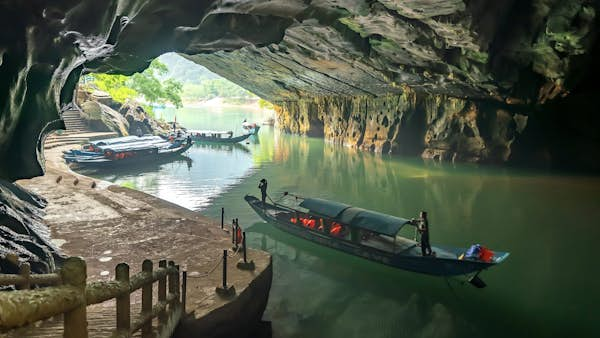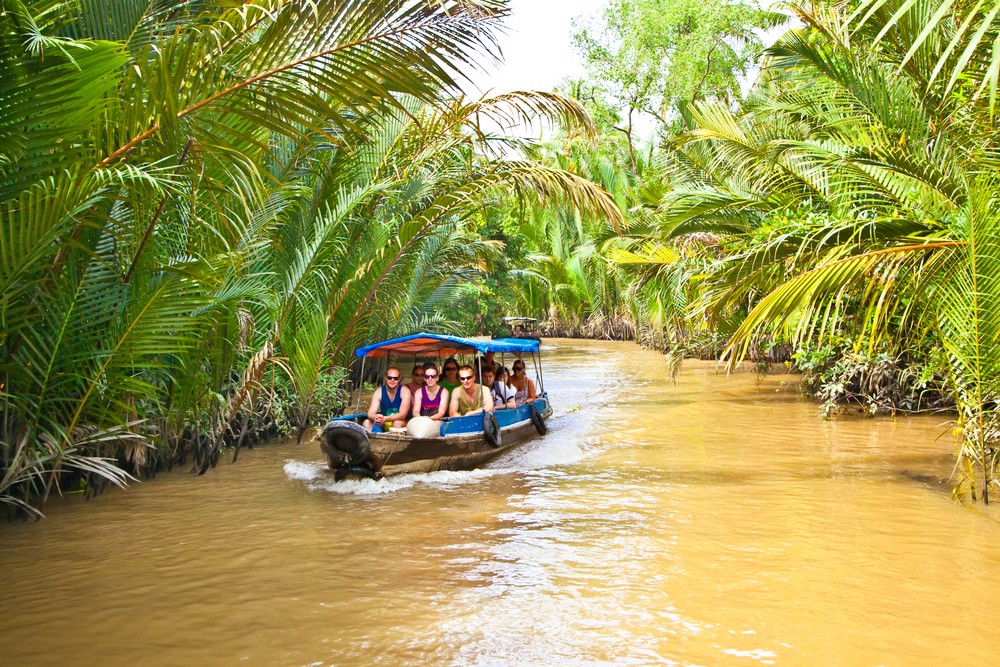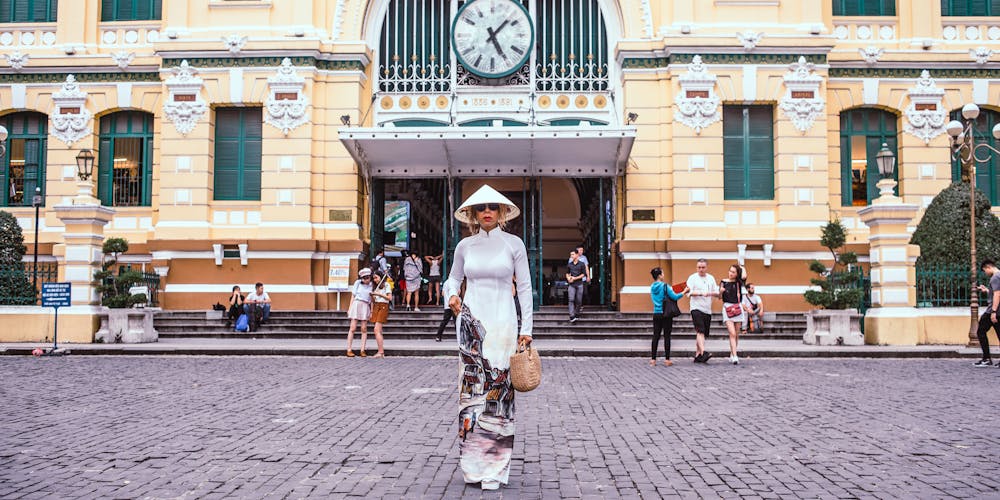Gone are the days when Vietnam only evoked images of rice fields, floating markets and workers in conical hats. This Southeast Asian powerhouse has today become a destination known for its majestic natural beauty, its pristine beaches, its unexplored ecological reserves and its delicious cuisine.
Halong Bay, Hoi An Old Town, Phong Nha – Ke Bang National Park and other Vietnamese sites have joined the UNESCO World Heritage list. Staple Vietnamese foods like banh mi and pho are common enough to appear in English language dictionaries. Some of the world’s most discerning travelers rank Phu Quoc, along with the Maldives and Bali, on lists of the world’s most beautiful islands.
And that’s just the beginning of what this country has to offer.
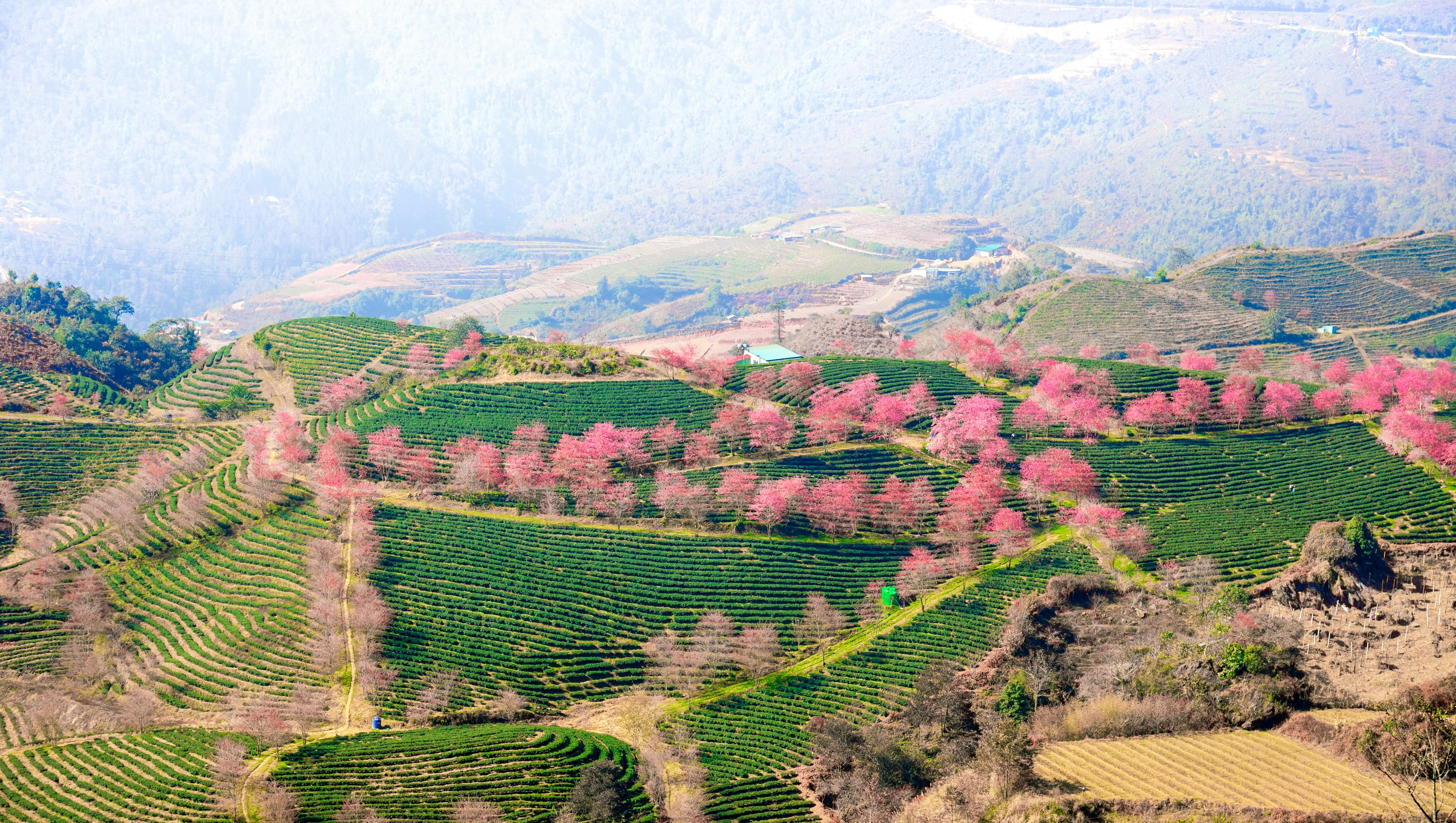
The best time to visit Vietnam.
Vietnam is almost 1,650 kilometers (1,025 miles) from north to south, a length that ensures that weather patterns vary widely and the best time to visit depends largely on planned destinations and personal preferences. Most visitors will want to avoid storm season, especially in northern Vietnam and central Vietnam, as violent storms often cause flash floods, landslides, and road closures. In contrast, the storm season in the south (June to November), although inconvenient, does not pose as significant a risk to travelers.
Storm season begins in May and ends around October in the north; from September to December in the central coastal regions; and from May to August in the central mountain regions.
Apart from that, the country’s climate is divided into three general zones:
In Northern Vietnam (Hanoi, Sapa, Ha Giang, Halong Bay), in September and November or March and April, the weather is cool and dry and the local tourism sector is not overwhelmed by travel within Vietnam. August and September are also Sapa’s harvest season and the best time to bloom vibrantly in the mountainous foothills.
Central Vietnam (Hoi An, Nha Trang, Hue, Danang) is best visited from April to August, when you’ll avoid the worst of the storm and flood season and the abundant sunshine will help you make the most of the sandy beaches. white from the surroundings. Hoi An and Nha Trang.
We recommend visiting South Vietnam (Ho Chi Minh City, Mekong Delta, Phu Quoc) from October to April, after abundant rains in the previous months ensured that the rivers and canals of the Mekong Delta were abundantly fed, allowing Travel seamlessly through this maze of intersecting waterways.
We recommend avoiding visits during major holidays such as Tet (Vietnamese New Year, usually in late January or early February) due to increased prices and accommodation bookings.
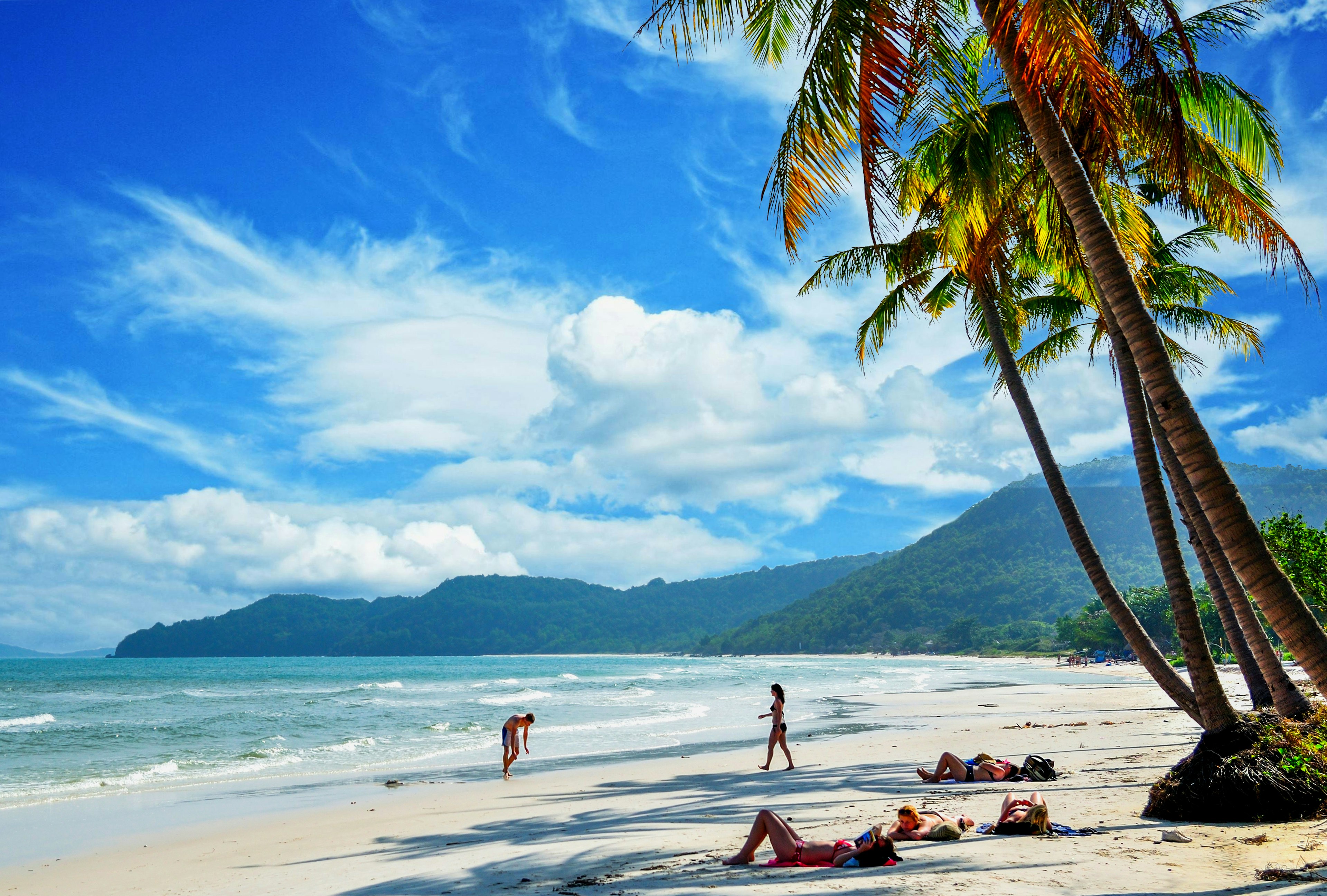
How long should I spend in Vietnam?
Experience the full breadth of experiences here? Months. Although this is unlikely for most visitors, two weeks will allow you to cover most of Vietnam’s best-known destinations.
Starting from Hanoi or Ho Chi Minh City (HCMC), you can travel throughout the country and enjoy a wealth of sights, flavors and experiences. Must-see locations include iconic favorites Sapa and Halong Bay; points of cultural and historical interest such as Hoi An and Hue; river capitals such as Can Tho and the extensive Mekong Delta that surrounds it; and the tropical paradise island of Phu Quoc.
If you’re short on time or money, quick three- or four-day trips focused on a singular area or city like Hanoi, Ho Chi Minh, or Phu Quoc are doable and offer a satisfying taste of Vietnam’s attractions.
Getting around Vietnam
Vietnam has three major international airports, in Hanoi, Ho Chi Minh City and Danang (the gateway to Hoi An and Hue). Additionally, Phu Quoc Island has its own international airport with direct flights to Singapore, Shanghai, Cambodia and Laos, and Phan Thiet Airport will launch international flights in 2025.
Traveling within Vietnam is relatively easy and affordable, with options including trains, buses and domestic flights. Flights are the most comfortable and fastest way to travel within the country. The buses are affordable, serve almost all parts of the country, and offer sleeper options for those who want to travel between the north and south without spending the night. In recent years, renewed interest has led to the renovation and revitalization of some train lines. Nowadays, traveling by train is a great option for those who want to take their time to enjoy the scenic routes around the country.
Within cities, taxis, ride-sharing apps like Grab or Be, and traditional motorcycle taxis are easily accessible. For those with the stomach for chaotic traffic, most Vietnamese cities are walkable and a lot of fun to explore on foot, although the tropical heat and humidity, along with dust and city exhaust, can make walking a chore. long distances is unpleasant.
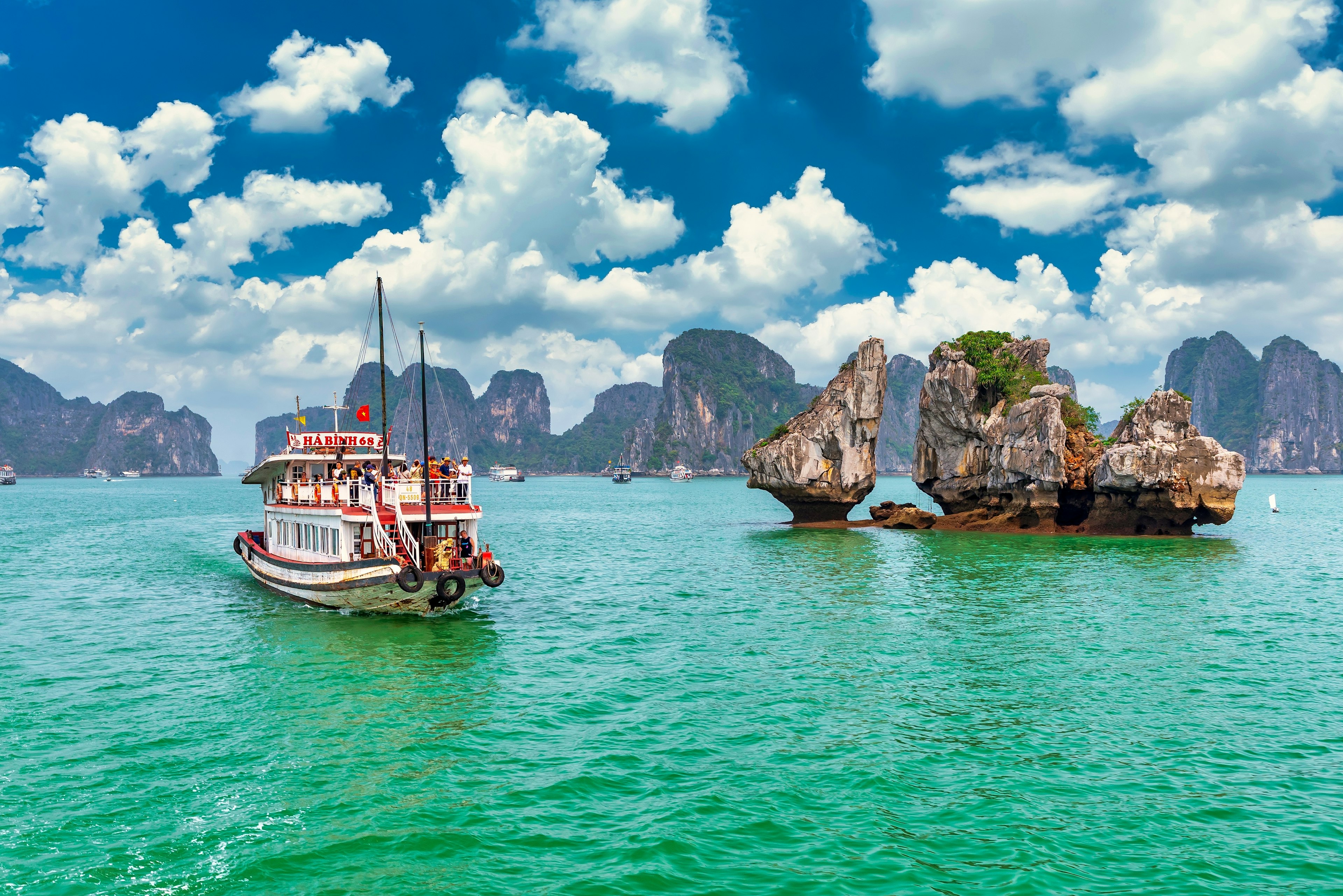
The best things to do in Vietnam
All the exciting things you can do in Vietnam could never fit all on one list. However, first-time visitors won’t want to miss out on some key experiences.
Halong Bay cruise. This stunning UNESCO World Heritage site comprises almost 2,000 towering limestone islands in a vast bay of blue waters. An evening cruise is the best way to take it all in. If you have some extra time, Lan Ha Bay is south of Halong: no less beautiful but much less busy.
Explore Hoi An. With its streets illuminated by lanterns and its tailor shops in full swing, this ancient city seems frozen in time. In the countryside surrounding the city, a host of traditional craft villages are waiting to be explored.
Go down the Cu Chi tunnels. This wartime labyrinth of tunnels is already an impressive experience, and from early 2024, night tours are being offered to travelers with nerves of steel and a taste for reliving the thrills of war.
Hike the trails of the Sapa highlands. The Northwest Highlands are famous for their majestic trails and stunning natural beauty. Sapa serves as a landing pad and base camp for adventurous hikers looking to explore the rugged region on foot.
Stroll through Hanoi Old Town. Get lost in this maze of narrow streets, each named after products that were once sold here. It is a great place to experience Vietnamese culture and street food.
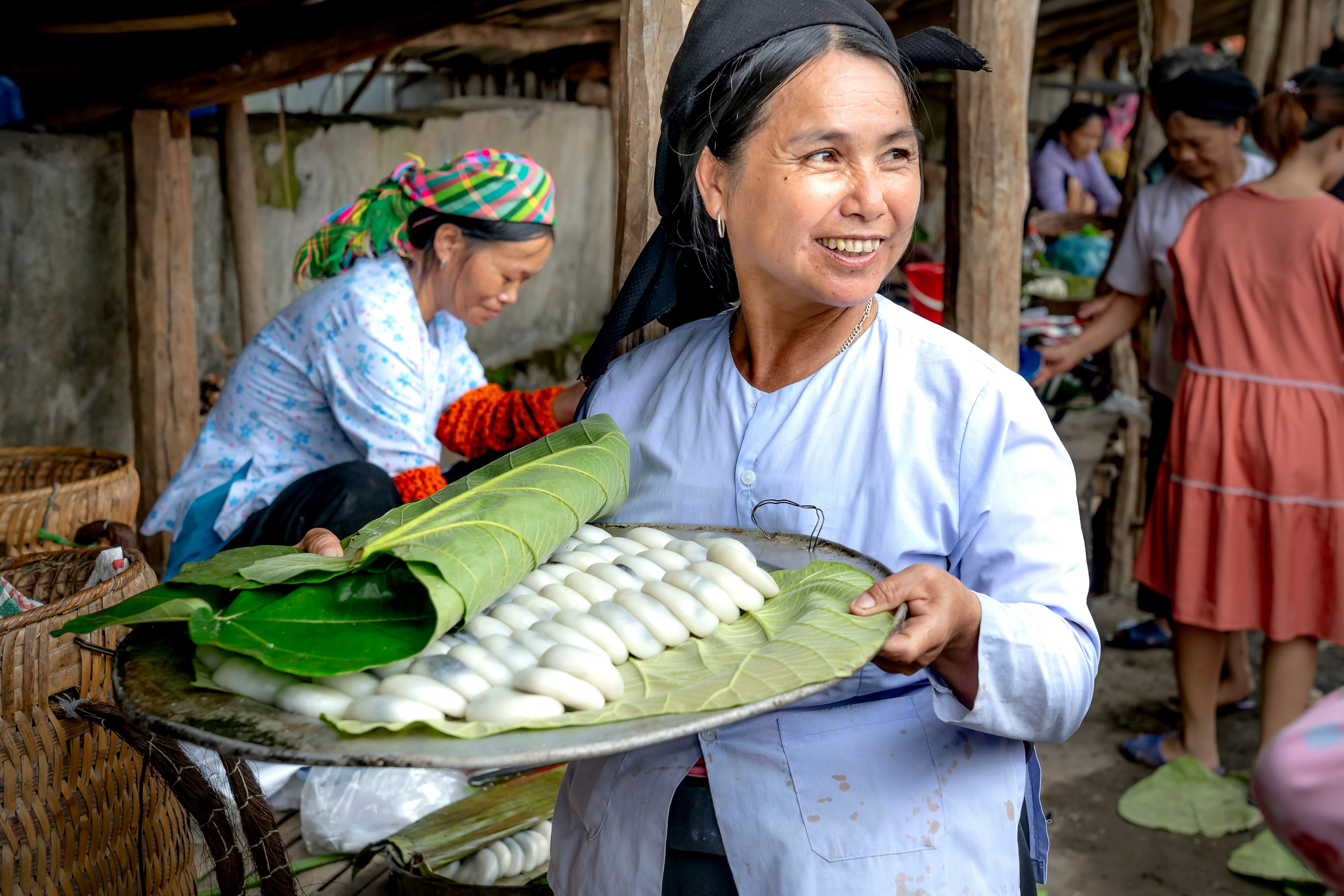
What I like to do most in Vietnam
What I like most about Vietnam? The food.
Beyond pho and banh mi, you can slurp up more than 200 different noodle dishes from all corners of Vietnam. There are foods exclusive to a single town. There are herbs exclusive to a certain area of a single forest. There are cuisines designed to satisfy the palates of emperors of the past. There are simple and humble dishes, cheap and filling, destined to fill the stomachs of peasants.
There is much to learn about the history of Vietnam and its people through the food they cook to nourish each other. My low-key dream is to travel to every city in Vietnam and try their special dish and hear the story behind it. (There’s almost always some crazy story attached to a hometown favorite.) That would be a great book.
How much money do I need for Vietnam?
While you’ll find luxury resorts, world-class restaurants, and premium experiences in certain parts of Vietnam, the country retains its well-earned reputation for budget travel.
Hostel room: US$10-15
Basic room for two: between 10 and 40 US dollars
Apartment with kitchen (including Airbnb): US$20 to US$50
Local bus ticket: 0.20–1 USD
Coffee: US$1 to US$3
Banh mi: between 1 and 3 US dollars (note that the famous and dramatic Madam Huynh Banh Mi in HCMC charges 3 dollars per sandwich, and one can easily feed two normal adults or one hungry weightlifter)
Dinner for two at a local restaurant: US$10 to US$30
Beer: US$1 to US$2 per can; $3 per liter for draft beer at a local brewery
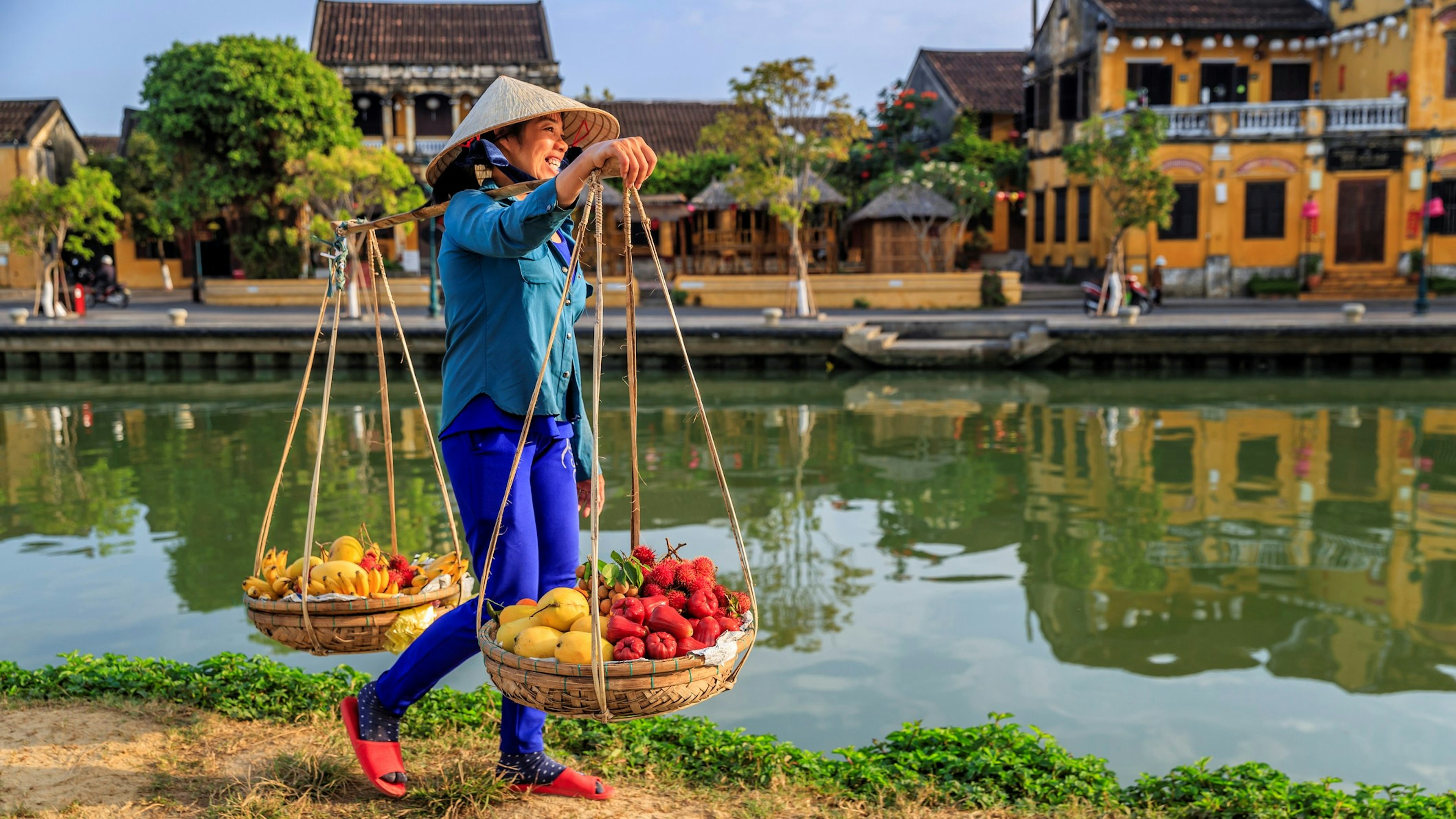
More tips to enjoy Vietnam
Wear lots of layers, no matter the season.
Especially if you are traveling throughout Vietnam. The country’s climate varies greatly over short distances, so it is wise to pack for different temperatures and weather conditions.
Respect local customs and etiquette.
As in other Asian nations, the Vietnamese value courtesy and respect. When visiting temples, remember to dress modestly and always remove your shoes when entering someone’s home.
Stay away from tap water and choose your street foods carefully.
Tap water in Vietnam is not safe to drink, so use bottled water everywhere. Enjoying street food is an essential Vietnamese experience, but as food hygiene can be an issue, observe the locals and choose whichever street vendors you prefer.
Prepare for chaotic traffic
The joke in Ho Chi Minh City and Hanoi is that traffic laws are more of a suggestion, so be careful when crossing streets and only consider renting motorcycles if you are an experienced driver.
A few words in Vietnamese go a long way
You can expect English to be widely spoken in Vietnam, especially in the big cities. Still, learning a few basic phrases in Vietnamese can only help, and will probably go a long way in showing respect and establishing connections with locals.
